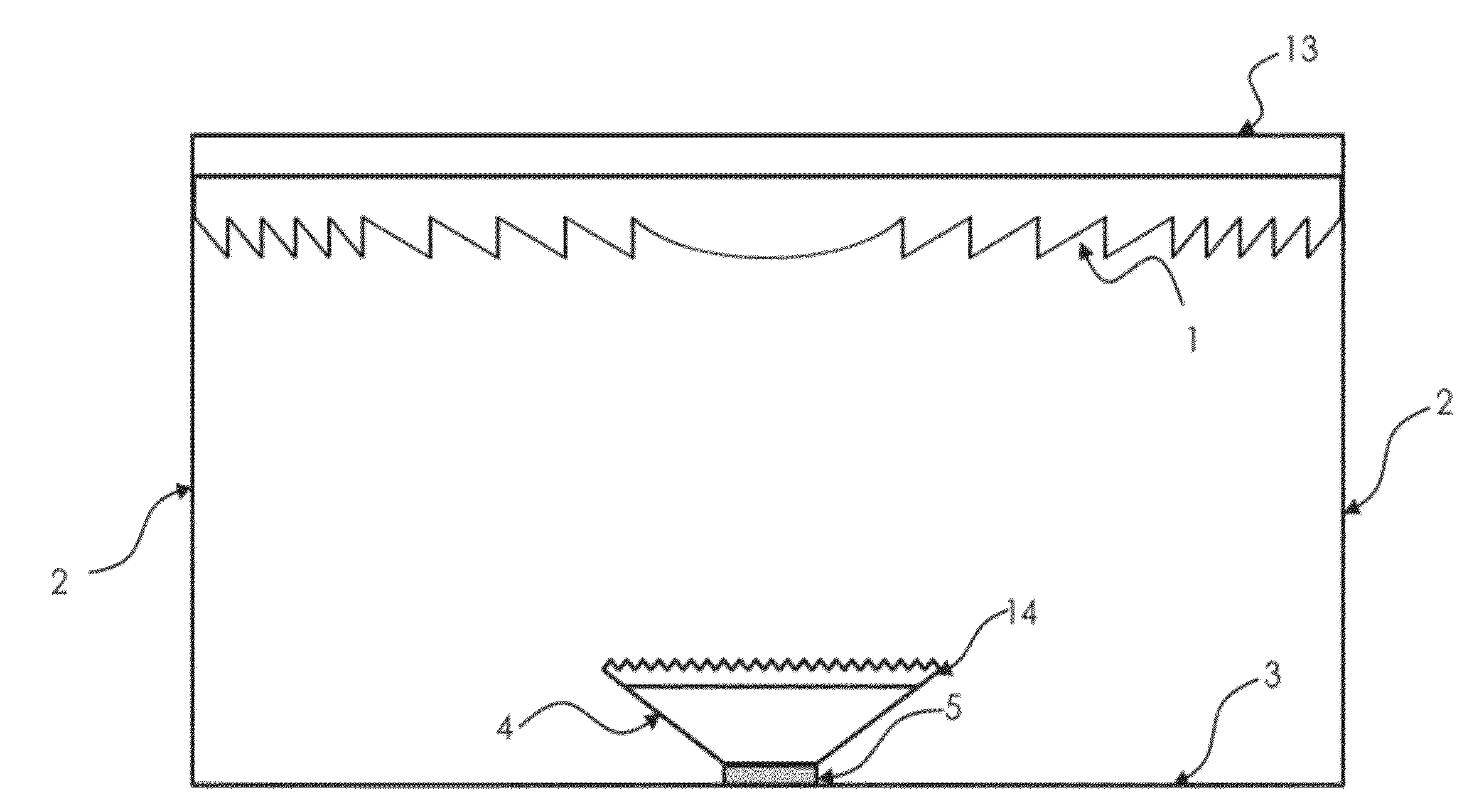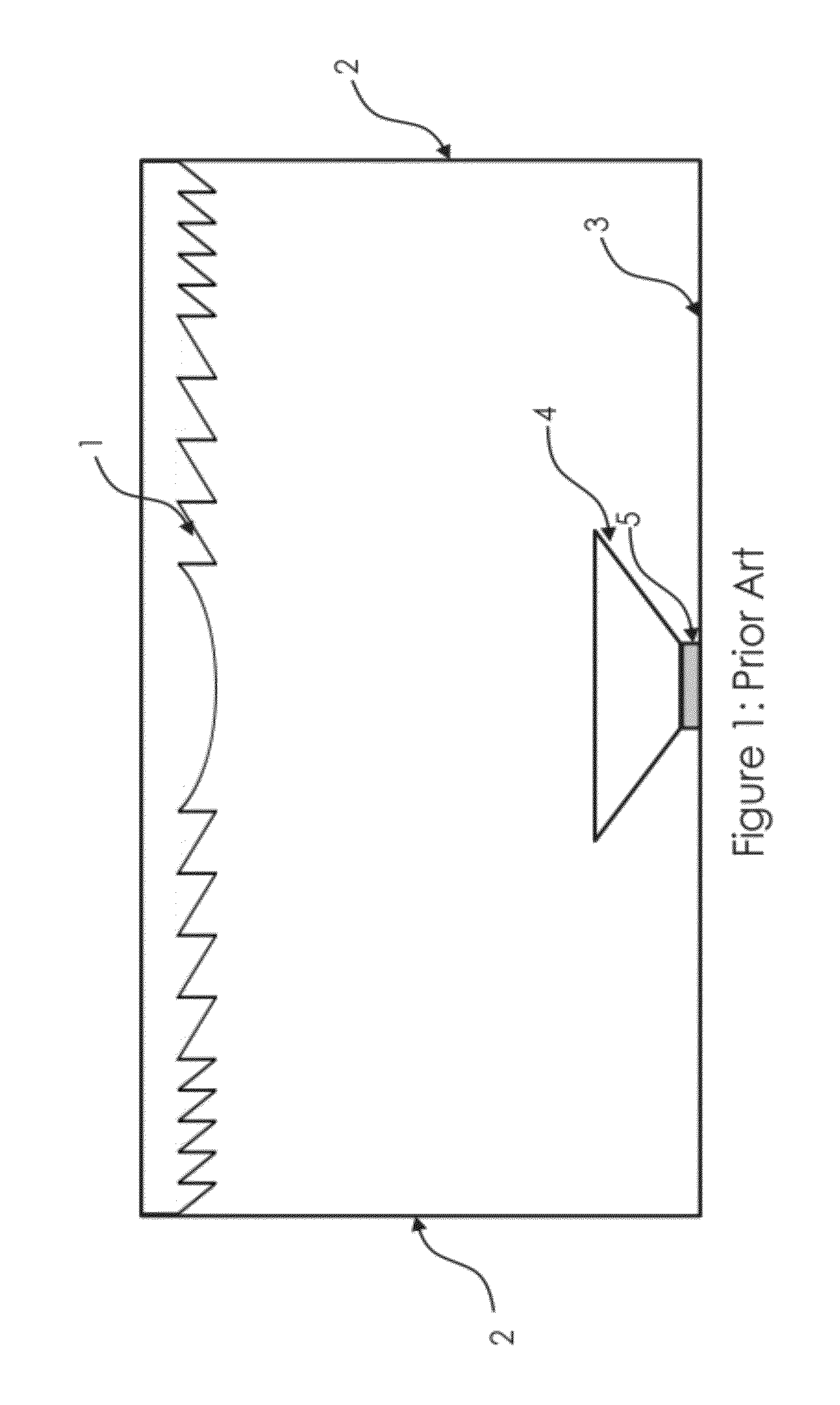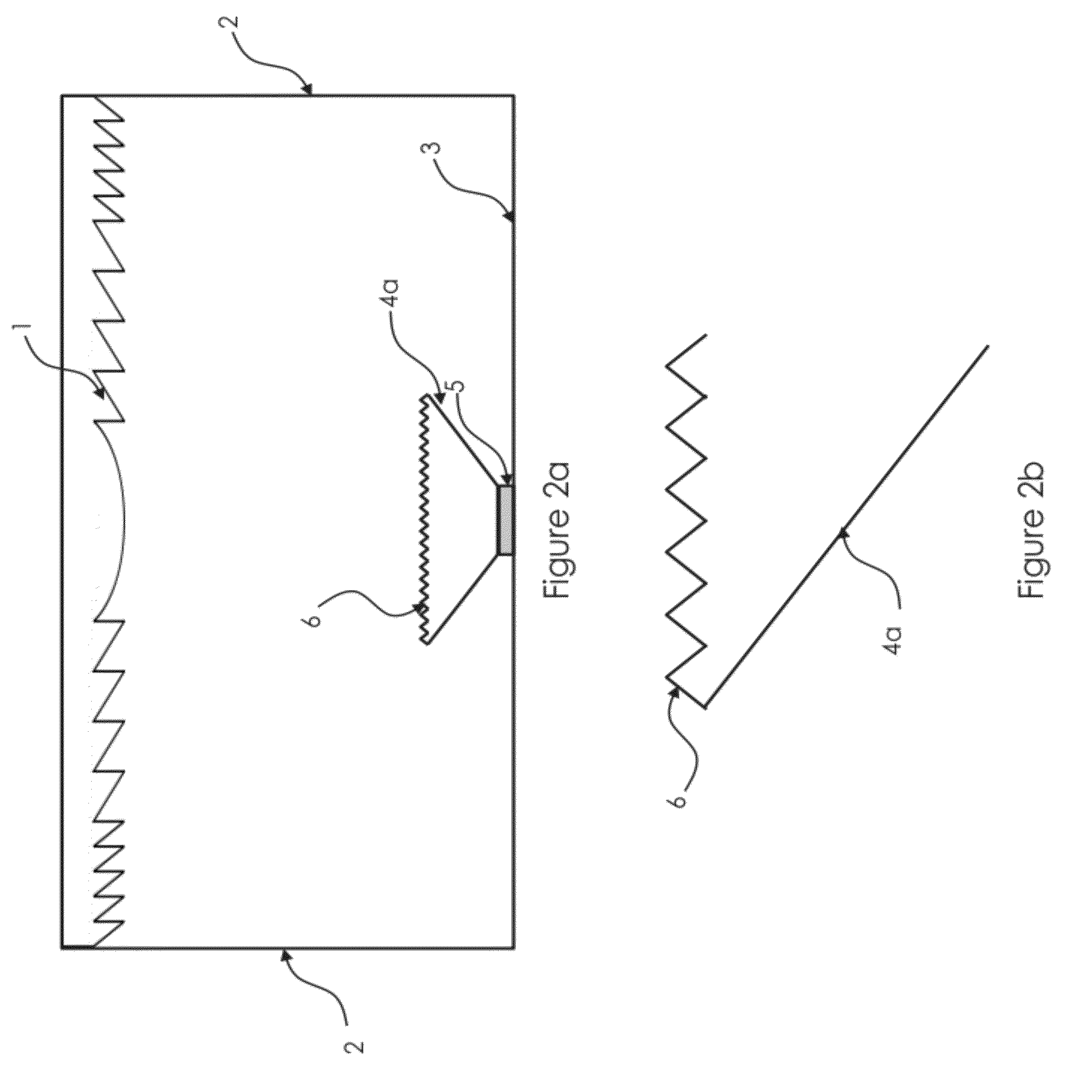Photovoltaic system for efficient solar radiation collection and solar panel incorporating same
a photovoltaic system and solar panel technology, applied in photovoltaics, electrical devices, semiconductor devices, etc., can solve the problems of reducing affecting the efficiency of light management, so as to achieve high quality optical focus of light, small angular acceptance, and thin form factor
- Summary
- Abstract
- Description
- Claims
- Application Information
AI Technical Summary
Benefits of technology
Problems solved by technology
Method used
Image
Examples
first embodiment
[0059]FIG. 2a shows a schematic cross sectional view of a primary embodiment of a concentrated photovoltaic system in accordance with the current invention; FIG. 2b provides a close up view of part of the current invention; and FIG. 2c provides a partial perspective view of the embodiment of FIG. 2a. The depicted concentrated photovoltaic system uses a Fresnel lens 1 as primary concentrator to collect the direct solar radiation over a relatively large area and then concentrate the light towards the photovoltaic cell 5 with a relatively small area. Before reaching the photovoltaic cell 5 the light is concentrated and mixed by the secondary light mixing concentrator 4a which is positioned on top of the photovoltaic cell 5 and in optical contact with the photovoltaic cell 5. The secondary light mixing concentrator 4a differs from the secondary light mixing concentrator 4 (FIG. 1) in the prior art at least in part because of prismatic surface structures 6 on the larger primary surface o...
second embodiment
[0060]FIG. 3 shows a schematic cross section of the current invention which differs from the primary embodiment in so far as it does not use a Fresnel lens 1 for the primary concentration optics but instead has another primary light concentrating optic 7. The depiction of the primary light concentrating optic 7 in FIG. 3 is general and the current invention covers any primary light concentrating optic 7 using refraction, reflection, total internal reflection or a mixture of these processes. Furthermore the current invention is not limited to a primary light concentrating optic 7 consisting only of a single element, but an assembly of a number of elements constituting the primary light concentrating optic 7 is also within the scope of the current invention.
[0061]The depiction of embodiments of the current invention focuses on linear arrangements of the Fresnel lens 1; however embodiments covered by the current invention are not limited to that. In FIG. 4a a three dimensional view of ...
PUM
 Login to View More
Login to View More Abstract
Description
Claims
Application Information
 Login to View More
Login to View More - R&D
- Intellectual Property
- Life Sciences
- Materials
- Tech Scout
- Unparalleled Data Quality
- Higher Quality Content
- 60% Fewer Hallucinations
Browse by: Latest US Patents, China's latest patents, Technical Efficacy Thesaurus, Application Domain, Technology Topic, Popular Technical Reports.
© 2025 PatSnap. All rights reserved.Legal|Privacy policy|Modern Slavery Act Transparency Statement|Sitemap|About US| Contact US: help@patsnap.com



